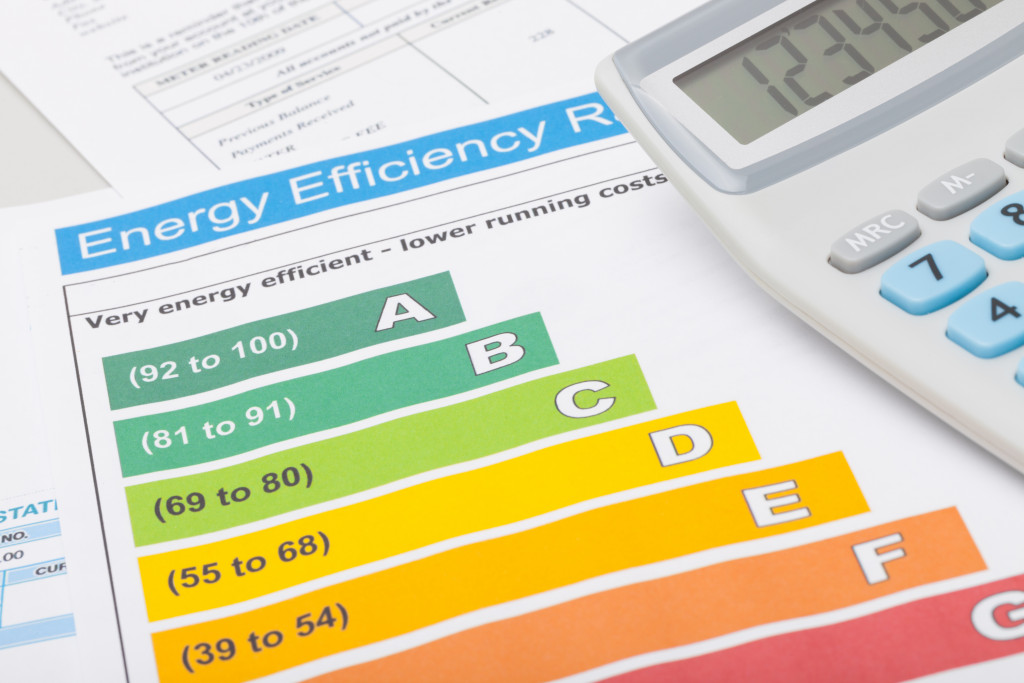- Using-efficient lighting and upgrading windows and doors can reduce carbon footprint and operational costs.
- Utilizing green cleaning products can improve indoor air quality and attract environmentally conscious customers and employees.
- Incorporating solar power and natural ventilation systems can provide long-term cost savings and enhance the building’s eco-friendliness.
- Investing in smart thermostats and energy-monitoring devices can help manage energy usage and reduce the building’s carbon footprint.
Making your commercial building environmentally friendly is a great way to reduce your carbon footprint and save money in the long run. Taking these steps will help the environment and benefit you financially by reducing operational costs and increasing property value. By taking proactive measures now, you can ensure that your business is doing its part for the planet while also saving money in the future.
Use environmentally friendly products.
Using environmentally friendly products is a great way to reduce your carbon footprint and make your commercial building more eco-friendly. Here are some ideas to get you started:
Install energy-efficient lighting.
It is crucial to incorporate energy-efficient lighting to make your commercial building an environmentally friendly space. This type of lighting is designed to reduce energy usage and save on operational costs. You can reduce your carbon footprint and utility bills by installing these lights.
Investing in polycarbonate Mardome Trade roof lights is great since they are an efficient option for natural lighting in a commercial building, as they can help reduce the need for lighting during the day. This type of lighting is beneficial for the environment and can also improve the atmosphere and productivity levels within the building. Ensuring that your building uses the most energy-efficient lighting available is essential to creating a more eco-friendly workspace.
Upgrade windows and doors to reduce air leakage.
Upgrading windows and doors to reduce air leakage is crucial in transforming your commercial building into an eco-friendly space. Air leakage occurs when air seeps in or out of your property through cracks, gaps, or poorly insulated areas. This can lead to energy inefficiency and a significant increase in heating and cooling costs.
By upgrading to energy-efficient windows and replacing old doors with ones that offer better insulation, you can effectively reduce air leakage and enhance the energy efficiency of your building. Not only does this contribute to reducing your carbon footprint, but it also helps you save money in the long run. It’s important to work with experienced professionals who can guide you through the process to ensure optimal results.
Utilize green cleaning products.
Green cleaning products are a cost-effective and environmentally conscious choice for commercial building maintenance. These products are formulated without harmful chemicals, making them safer for the environment and human health. Not only do green cleaning products reduce the number of toxins released into the environment, but they can also improve indoor air quality by reducing the amount of volatile organic compounds.
In addition to being beneficial to the environment and human health, utilizing green cleaning products can also attract environmentally conscious customers and employees, making it a wise marketing move. By incorporating green cleaning products into your commercial building’s maintenance routine, you can take a big step toward making your building more environmentally friendly.
Utilize solar power.

Reducing our carbon footprint has become a top priority as people become more environmentally conscious. One way to accomplish this is to utilize solar power in commercial buildings. The process involves installing solar panels that convert sunlight into electricity, reducing reliance on traditional energy sources.
Not only does this help to reduce greenhouse gas emissions, but it also provides long-term cost savings on energy bills. Utilizing solar power is not only a smart choice for the environment but is also a wise financial decision for businesses. By investing in renewable energy, commercial buildings can reduce their environmental impact and potentially save thousands of dollars in energy costs over time.
Make use of smart thermostats.

With the rise of eco-consciousness across the globe, it has become vital for commercial buildings to adopt green practices. One such method involves the usage of smart thermostats and energy-monitoring devices. These devices can help manage energy usage in commercial buildings, thus ensuring the minimum amount of power is consumed.
This leads to significant cost savings while reducing businesses’ carbon footprint. Expert advice for businesses would be to invest in smart thermostats and energy-monitoring devices, conduct regular energy audits, and train employees on energy conservation practices. By taking these steps, businesses can contribute to saving the environment and benefit financially.
Incorporate natural ventilation systems.
Incorporating natural ventilation systems into commercial buildings is an environmentally sound choice and a smart financial decision. By utilizing natural airflow through windows, doors, and vents, buildings can reduce their reliance on energy-intensive heating and cooling systems, resulting in long-term cost savings.
Additionally, natural ventilation systems can improve indoor air quality, promoting a healthier work environment for employees. It also helps reduce the building’s carbon footprint, thus making it more environmentally friendly. Properly implementing these systems requires careful consideration of building orientation, window placement, and outdoor air quality. Still, the benefits of a well-designed natural ventilation system are well worth the effort.
These are just a few of the steps that can be taken to make commercial buildings more eco-friendly. In addition to shrinking your business’s carbon footprint, these measures can pave the way for future cost savings and a heightened property value.




